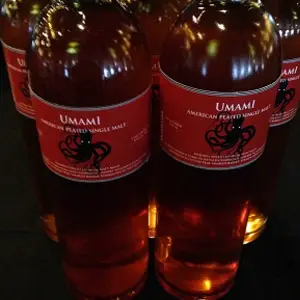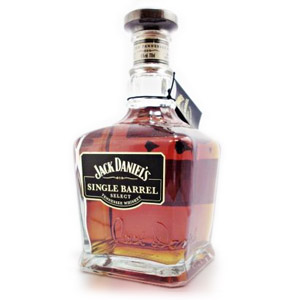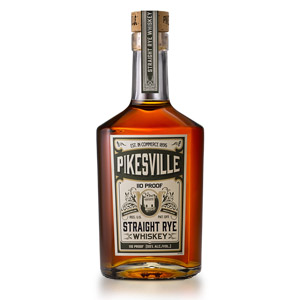Larceny is one of the few wheated bourbons on the market, which is surprising considering the wild popularity of a certain other “wheater”, Pappy Van Winkle. Larceny is produced at Heaven Hill, the distillery that makes Elijah Craig, Evan Williams, Old Fitzgerald, Parker’s Heritage, and others. “Wheated bourbons” if you’re wondering, use wheat as the flavor grain instead of the more commonly-used rye. In both cases the majority of the mash bill is corn. Using wheat usually results in a softer, fuller, and less spicy bourbon than using rye does.
The unusual name refers to legendary whiskyman John E. Fitzgerald’s penchant for liberating bourbon directly from barrels as they matured in-warehouse (whiskey he did not own).
This “Barrel Proof” edition is a small batch release (just like Larceny’s non-cask-strength bottling) of Kentucky straight bourbon bottled at a whopping 61.1% ABV from casks aged between 6 and 8 years. The producers did not use chill filtration, according to the back of the bottle, which is rare to see on an American whiskey label. Heaven Hill releases a new batch of Larceny Barrel Proof three times a year (in January, May, and September) and the proof will vary from batch to batch.
My bottle is from batch B520. According to the brand website, “The first letter of the batch number indicates which of that year’s releases the bottle was a part of starting with “A”, while the second digit is a number that determines the month of the year the bottle was released. The third and fourth digits indicate the year.” That means my batch is from May 2020.
As is the case with a lot of cask-strength bourbons these days, the price gap between standard (40 – 50% ABV) strength and cask strength has widened. I believe this is due to the industry trying to position cask strength bourbons and ryes as a “premium” category since they appeal more strongly to aficionados. A decade ago, the cask-strength equivalent of a bourbon would cost maybe 20% more. Now it’s more (or far more) than double.
Nose: Concentrated dark wet oak, cherry jam, chocolate-covered dried cherries, dark brown sugar, and pecan pie. There is a real depth of aroma, and the nose tickle is quite tame considering the high proof.
Palate: Silky body with a tongue-searing burn that causes the eyes to water. After the flames subside, there is dense cherry syrup, furniture polish, chewy dried cherries, and slightly bitter oak.
Finish: Long but vague, and somewhat drier than expected. The furniture polish and cherries remain, but much of the brown sugar is gone, leaving charcoal and bitter tannic oak bark. Mid way there is a touch of menthol. Fades slowly but without evolving.
With Water: Several drops of water initially increase the nose tickle, necessitating a rest in the glass. The water doesn’t seem to have any effect on the flavors, unless you add enough to tame the burn. I prefer it undiluted.
Overall: It’s hard to argue against the concentrated goodness of cask-strength bourbon. At $60 it’s a little hard to swallow, but you have to remember that while 6-8 year-old cask strength bourbon used to cost $20 – $30 at most, those days are long gone, and many distilleries are slapping “limited edition” on the labels and charging upwards of $100! Under those conditions, $60 is about right for the quality you receive. You really can’t compare this to cheaper 50% ABV bourbon… cask strength just hits different.
Note – Because this is a limited release, some retailers will jack up the price between batches and charge upwards of $120 to $200. Don’t do it, it’s not worth that.








